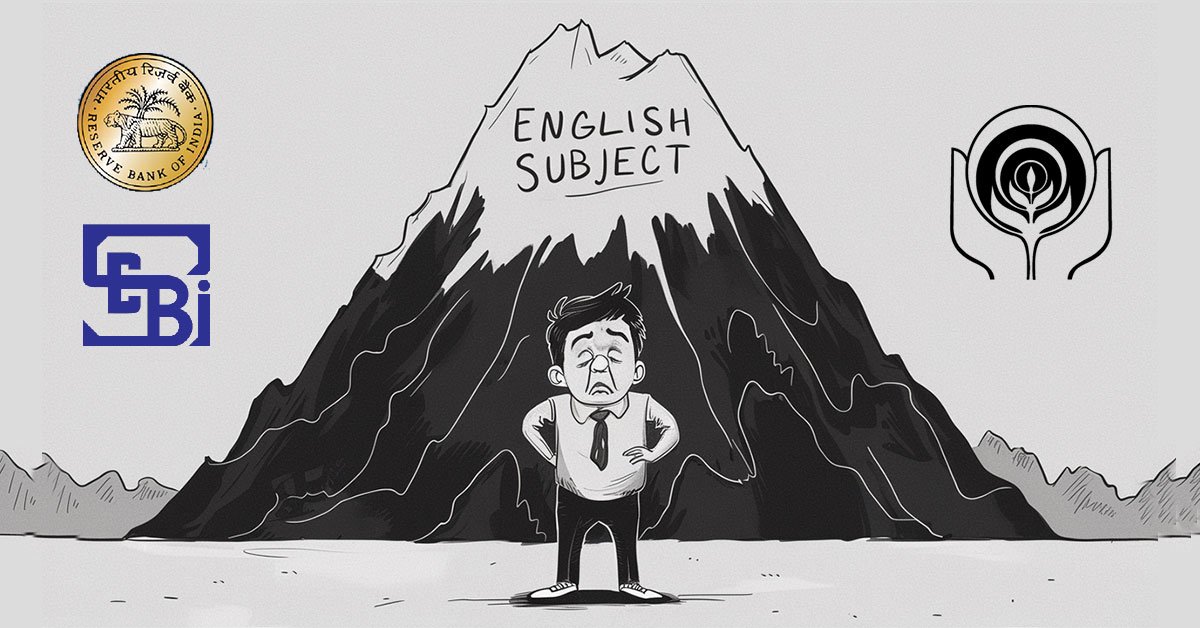Daily Current Affairs Quiz
8 February, 2025
Table of Contents
ToggleInternational Affairs
1. U.S. Sanctions International Criminal Court (ICC)
Context:
Former U.S. President Donald Trump has signed an executive order imposing sanctions on officials investigating the US and its allies, particularly after the recent arrest warrants issued by the court’s presiding judge against Israeli Prime Minister Benjamin Netanyahu and a former Israeli defense minister for their alleged roles in the Gaza conflict.
Key Highlights:
- Sanctions on ICC Officials
- Denies visas and freezes assets for ICC employees and their family members involved in cases against US citizens or partners. It’s a revival of a Trump era policy from his first term opposed to the ICC’s jurisdiction over the United States.
- It is a direct response to the investigation into Israel’s military actions in Gaza by the ICC.
- Justification by the US Government
- White House argues that the ICC is drawing a false equivalency between the Israeli leaders and Hamas which is considered a terrorist organization by the US.
- US government does not recognize the conflict of the ICC jurisdiction over non member states as illegitimate.
- International Reaction
- ICC Response: The court condemned the sanctions, calling them an attack on its independence and impartiality.
- European Union (EU): European Council President António Costa condemned the US, saying the sanctions undermine international criminal justice.
- Several EU leaders expressed concern that Trump’s action threatens the ICC’s credibility.
- Political Implications
- An expression of the broader foreign policy stance common to Trump, wherein national sovereignty is put before international legal institutions. Represented another shift in the US-Israel alliance, during a period in which Israel is under international legal scrutiny concerning its actions in Gaza.
International Criminal Court (ICC)
International Criminal Court is an independent international, international criminal law tribunal with The Hague, Netherlands base. The base was established through the 2002 Rome Statute, where Individuals may be prosecuted based on their genocide crimes against humanity, war, crimes and aggression. International Court of Justice that was created to assist in disputes regarding states.
- President
- Tomoko Akane
- Member States
- 125
History
- Early Ideas (1919–1948)
- Early thought toward an international court following World War I and World War II caused establishment of the Nuremberg and Tokyo trials.
- The threat of a Cold War halted the creation of a permanent tribunal during the 1950s through 1980s.
- Revival & Rome Statute (1989–1998)
- Work began again in 1989 with the submission of the idea by Trinidad and Tobago. The Rome Statute was accepted in 1998, where 120 countries voted for it, and the ICC became official in 2002.
Structure & Functioning
The ICC has four key bodies:
- Presidency – Judges who are elected to supervise the administration.
- Judicial Division – There are 18 judges that try and appeal.
- Office of the Prosecutor – Conducts investigations and prosecutes cases.
- Registry – Provides administrative services, including witness protection and legal aid.
2. The Global Trading System
Context:
The international trading system has failed America and other trade deficit countries, mainly because free trade doesn’t truly exist. The global economy has become distorted by countries like China, Germany, and Vietnam, which manipulate policies to run chronic trade surpluses. This imbalance has led to massive economic consequences, including job losses, wage stagnation, and declining industrial competitiveness in the US and other deficit nations.
Global Trading System
The global trading system, also known as the international trading system, is a network of rules and agreements between countries that govern the import and export of goods and services.
Key Highlights:
The Failure of the Global Trading System
The system hasn’t failed because free trade doesn’t work, but because true free trade has never existed.
- Certain countries, especially China, have rigged trade in their favor through:
- Government subsidies
- Market access restrictions
- Currency manipulation
- Predatory industrial policies
- The balance is indicated by China’s $1 trillion trade surplus in 2024.
Effects on the US and other Deficit Countries
The transfer of US wealth overseas would total $20 trillion over 20 years
- Loss of technological superiority:
- China dominates 57 of 64 critical technologies (per Australian Strategic Policy Institute).
- Lags in semiconductors, shipbuilding, solar panels, and personal computers.
- US economy suffers from trade deficits in 2024: More than half of cars sold in the US were imports. For the first time in history, the US imported more food than it exported.
The Human Cost: Wages, Inequality, and Declining Life Expectancy
Millions of good paying jobs lost, leaving workers poorer. Real wages stagnated for two decades in many industries.
- Growing wealth inequality
- The top 1% owns more wealth than the middle 60% combined.
- Widening life expectancy gap
- Americans without a college degree now live 8 years less than those with one.
The Demand for a New Trade Regime
A system for democratic nations that are mostly free economies. Should find unity and implement a new fair trade.
- Core principle
- Trade needs to be reciprocal or countries export to import, not just to garner wealth and more power.
Proposed Solution: A Two Tier Tariff System
- Higher Tariffs for Non Democratic and Free Riding/Chronic Surplus Nations (e.g., China).
- Lower tariffs for participating democratic economies to maintain trade balance.
- Tariffs adjusted over a rolling three year period to prevent new imbalances.
- Alternatives to tariffs exist, but tariffs are legal, flexible, and enforceable under existing frameworks.
National Affairs
1. AI Technology
Context:
It hugely transforms the very nature of the global industries, economies, and geopolitics. So, this field’s proper governance is extremally necessary now. India ranks among the most rapid adopters of AI technology in the entire world. Hence, its vibrant contribution to international initiatives for developing AI safety assures that the high-tech future can be made a safe one. India embraces AI so highly and it has a big population of users in AI and still, no national AI safety institute is in existence and this country hasn’t also joined global efforts to address crucial AI governance issues.
Key Highlights:
Dangers of Unchecked AI
- Unaccountable and Threatening
- AI system behaviors turned unaccountable and threatening in nature while it presented itself during the 2024 case with the chatbot provided by Google- Gemini that messaged a person a pretty astonishing and aggressive communication.
- Safety Regulations
- Such events call for having safety regulations on AI practices so as not to harm users by its unintended consequences.
- India needs to offer reasonable AI regulation to achieve the balance of safety and innovation.
International AI Safety Programs and India’s Lack
- The International Network of AI Safety Institutes
- It was launched in November 2024 to standardize global AI safety standards.
- The programme is based on the Seoul Statement of Intent, under which countries have agreed to cooperate on risk management in respect of AI.
- India’s Position
- India is not included in the list, though its AI adoption rate stands at 30%, which is more than half of the global average of 26%.
- This may be one of the exclusions of this country from formulating global AI policies that may emerge affecting its future AI ecosystem.
Cross Border Nature of AI and Necessity of International Collaboration.
- Transparency and Accountability
- It cuts across borders in AI, that is the necessity of international collaboration in facing some of the problems shared like areas in ethics, security threats, and to make AI accountable, and make AI use be transparent.
- India’s Status
- India is the highest consumer of AI which holds 10% of ChatGPT users at a global level.
- International level of engagement in AI governance will help India to make international rules shaping and protect its AI ecosystem.
The Geopolitical Risks of AI
- AI will become central to geopolitics, informing economic and security policies.
- The US is imposing export controls on advanced AI software mainly to slow down China’s rise in AI.
- India is being viewed as the “non China” alternative but may still face restrictions that limit access to the latest AI tools.
- Unless India engages proactively, it risks being sidelined in AI advancement and collateral damage in global tech rivalries.
Leverage AI governance strengths for India
- IT industry and a digital ecosystem, for instance, Aadhaar, UPI-an example of successful scaling of responsible AI solutions.
- This is an example of success on India where DPI has provided a model even for more inclusive and interoperable AI governance.
- Joining proactively global AI safety efforts, India can further attract investments and partnerships and make its stance stronger in policymaking of AI to work for the best interest of nations and help drive the world forward.
2. Theatre Level Operational Exercise (TROPEX)
Context:
Indian Navy’s biennial capstone Theatre Level Operational Exercise (TROPEX) is under way in the Indian Ocean Region, in which the combined fleet, comprising approximately 65 Indian Navy ships, nine submarines, and over 80 aircraft, are being “put through complex maritime operational scenarios to validate and refine the Navy’s Concept of Operations”.
TROPEX 25
TROPEX 25, the Indian Navy’s flagship Theatre Level Operational Exercise is underway in the Indian Ocean Region. It is a biennial exercise that involves all operational Indian Naval units and is participated upon by significant numbers from the IA, IAF, and the ICG to validate core warfighting capabilities and ensure a synchronized response to maritime security threats.
Duration & Phases
- Conducted for three months (Jan to Mar, 2025).
- Consists of the Harbour and Sea phases.
- Focuses on combat operations, cyber & electronic warfare, live weapon firings, and AMPHEX.
Key Highlights:
- Operational Scope
- Consists of 65 Indian Naval Ships, 09 Submarines, and over 80 Aircraft.
- Holds complex maritime operational scenarios.
- Assesses forward deployment, sustenance, and interoperability.
- Key Platforms Engaging
- Naval Forces: Home built aircraft carrier INS Vikrant, Visakhapatnam & Kolkata Class destroyers, Kalvari Class submarines
- Aircraft Fleet: MiG 29K fighter aircraft, P8I maritime patrol aircraft, HALE Sea Guardian drones, MH 60R helicopters
3. Olive Ridley Turtles
Context:
A spate of Olive Ridley sea turtle deaths has been witnessed off Tamil Nadu’s coast. Fisherfolk and conservationists have recorded an unusually high number of carcasses stranding along the coast since January 2025. Conservationists had tallied 1,200 dead turtles more than three times the annual average.
Olive Ridley Turtles: Ecological and Cultural Importance
The second-smallest and most abundant in the Cheloniidae family.
- It is found in warm waters, as well as tropical and subtropical regions, notably within the Pacific and Indian Oceans.
- Mostly Found
- Tropical regions of the Atlantic, Pacific, and Indian oceans.
- IUCN status
- Endangered
- It plays a significant role in marine ecosystems as seagrass growth controllers, maintaining jellyfish populations and serving as a habitat for fish.
- Culturally speaking, they represent importance to Tamil Nadu’s fishing communities. They view them as “guests” or even “gods.”
- Their nesting period indicates December to April that is very important to date for population maintenance.
Possible Causes of Mass Deaths
- Destructive Fishing Practices
- The main culprits are trawling and gill nets, which cause entangling and drowning.
- Although the Tamil Nadu Marine Fishing Regulation Act of 1983 does not allow trawlers within a mile or 5 nautical miles of shore, it is rampant.
- Conservationists say that “existing fishing in turtle aggregation zones makes matters worse.”
- Regulatory and Enforcement Failures
- There exist many laws, but they are badly implemented.
- There is a policy of using TEDs, which is largely neglected because fishermen claim that they decrease their catch.
- Climate and Environmental Factors
- The north east monsoon of 2024 lingered longer than expected, causing heavy seas.
- Plastic pollution and coastal construction (groynes) further degrade nesting habitats.
Government and Conservation Responses
- Task Force Formation
- The Tamil Nadu government has formed a team to strengthen trawling regulations and enforce TED usage.
- Increased Patrols
- Joint monitoring by the Fisheries and Forest Departments, Indian Coast Guard, and Marine Police.
- Legal Action
- The National Green Tribunal has criticized the state government for failing to regulate trawlers.
- Research and Conservation Efforts
- Plans for long term monitoring, including telemetry studies.
- Conservationists and volunteers continue night patrols to protect eggs and relocate them to hatcheries.
Challenges and the Way Forward
- Fishermen’s Resistance to TEDs
- Many fear financial losses and claim no viable alternatives have been provided.
- Need for Collaborative Efforts
- Ecologists believe that better fishing regulations will benefit not only the turtles but also the traditional fishermen.
- Technology and Community Involvement
- Tracking apps, better enforcement, and engaging local communities can help improve conservation efforts.
- Pollution Control and Habitat Protection
- Long term conservation will be ensured if plastic waste is reduced and habitat destruction is prevented.
UPSC Civil Services Examination, Previous Year Questions (PYQs)
Prelims
Q. Which one of the following is the national aquatic animal of India? (2015)
(a) Saltwater crocodile
(b) Olive ridley turtle
(c) Gangetic dolphin
(d) Gharial
Ans: C
Q. Consider the following statements: (2019)
- Some species of turtles are herbivores.
- Some species of fish are herbivores.
- Some species of marine mammals are herbivores.
- Some species of snakes are viviparous.
Which of the statements given above are correct?
(a) 1 and 3 only
(b) 2, 3 and 4 only
(c) 2 and 4 only
(d) 1, 2, 3 and 4
Ans: (d)
Banking/Finance
1. RBI Cuts Repo Rate
Context:
The Reserve Bank of India (RBI) cut the policy repo rate by 25 basis points to 6.25%, the first cut in almost five years, driven by weakening inflation and slowing economic growth. Key takeaways from the policy announcement, its economic implications, and the market reaction are as follows:
Key Takes of the RBI Verdict
- MPC Decision
- Repo Rate Cut: From 6.5% to 6.25%.
- Unanimity: Six members voted for it in the MPC.
- Policy Orientation: Maintained a neutral stance while capping its monetary policy less tight.
Why Rate Cut?
- Inflation is Coming in Analysed Moderation
- Headline inflation had risen above 5% in recent months, but would begin to ease back. RBI reduced its inflation projection for Q4 FY26 to 4.2%.
- Economical Growth Slowing
- India had slipped to growth of 5.4% in Q2FY25; this did weigh on space for policy to maneuver.
- Forecasts for Growth in FY25 reduced further to 6.4 % (previous forecast was of 6.6% released in December).
- RBI is optimistic about 7%+ growth potential.
Key Regulatory Announcements
- Liquidity Coverage Ratio (LCR) and Project Finance Norms
- The Liquidity Coverage Ratio (LCR) is a metric that measures a bank’s ability to meet its short-term obligations. It’s calculated by dividing a bank’s high-quality liquid assets (HQLA) by its total net cash outflows over a 30-day period. The LCR must be at least 100%.
- The above was originally to be effective from 2025, has now been shifted to 31 March 2026.
- Expected Credit Loss (ECL) Framework
- Expected Credit Loss (ECL) is a method for estimating the amount of financial losses a company or financial institution may incur due to a customer’s default or non-payment. ECL is a probability-weighted estimate of the potential losses that may occur on a loan or portfolio of loans.
- Its implementation has also been shifted to 31 March 2026.
- Retail Loans
- RBI has been pleased with the moderation in unsecured retail loan growth.
- Regulatory Measures
- “Cease and desist” orders will be used only in the rarest of rare cases.
Rate Cut Implications
- Banking & Loans
- Direct Effect: About 40% of loans with an external benchmark interest rates shall be reduced.
- Lags in transmission: Rates of deposit and MCLR linked loans will take at least two quarters to absorb.
- Inflation & Growth Forecast
- Inflation: It will soften, with FY26 estimates at 4.2%.
- Growth: RBI projects GDP back to growth but recognizes FY25 growth will be lower than FY24.
- Tax Incentives: Assures that the govt’s tax sops will not be inflationary.
- Market Reaction
- Stock Market Response:
- Sensex ended down 198 points ( 0.3%) at 77,860.
- Nifty closed 43 points lower ( 0.2%) at 23,560
- Though it lost, both indices showed weekly gain (Sensex: +0.46%, Nifty: +0.33%).
- Stock Market Response:
- Forex Market
- RBI intervened by selling dollars to stabilize the rupee.
- Rupee has initially strengthened at ₹87.32/USD, but settled at ₹87.43/USD.
The RBI is actually playing the game of juggling between supporting growth and containing inflation. In doing so, however, the market reaction to the move remains muted in that the market has priced the move, or is careful on future uncertainties regarding the economy. The central bank remains bullish about India’s long term 7%+ growth potential, nonetheless, challenges related to growth are persistent over the near term.
Source: Business Standard
2. Liquidity Coverage Ratio (LCR)
Context:
The RBI has postponed the implementation of the proposed Liquidity Coverage Ratio (LCR) guidelines to at least March 31, 2026, from April 1, 2025. This gives banks more time to adjust and prevent disruption. In addition, there is no fixed timeline for Expected Credit Loss (ECL) and project finance norms, so it will ensure a more balanced regulatory approach.
Liquidity Coverage Ratio (LCR)
The LCR is one of the most significant financial metrics that indicates a bank’s ability to meet short term liabilities. It makes sure banks are sufficiently exposed to HQLA in order to survive any form of financial stress for 30 days. The LCR must be at 100% and above.
Calculation
The formula for Liquidity Coverage Ratio (LCR) is:
LCR = ⇒ High Quality Liquid Assets (HQLA) / Total Net Cash Outflows × 100
Where:
- High Quality Liquid Assets (HQLA): Assets that can be quickly converted into cash during times of financial stress.
- Total Net Cash Outflows: The total amount of expected cash outflows minus the expected cash inflows over a 30-day stress period.
For example, if a bank’s HQLA is ₹500 crore and its total net cash outflows are ₹400 crore, the LCR would be:
LCR = (500 / 400) × 100 = 125%
- Purpose of LCR
- A BCBS reform in banking stability.
- Facilitates banks to withstand financial and economic shocks so that a financial crisis is averted.
- The probability of financial instability spilling over into the real economy is minimized.
- What are High Quality Liquid Assets (HQLA)?
- Liquid assets that can easily be liquidated into cash when there are liquidity needs.
- Examples include: Cash at the central bank, Government bonds.
- Significance of LCR.
- It provides for the banks’ ability to meet short term obligations. This then enables banks to be more resistant to market disruption and financial shocks.
- It enhances the resilience of the banking system against financial stress.
Key Highlights of RBI’s Announcement
- Postponement of LCR Norms
- Scheduled to be implemented on April 1, 2025, but now it has been postponed to March 31, 2026 or later.
- RBI wants it to be phased in rather than being rolled out suddenly.
- Banks had asked for more time as liquidity conditions in the system were very tight.
- LCR norms have an over and above 5% runoff factor to be used for assigning retail deposits if IMB facilities are available
- No Predefined Timeline for ECL & Project Finance Norms
- The ECL framework is still at the discussion stage. Even a draft has yet to be made available
- RBI agrees that major system overhauling of IT is required and may take approximately 6 12 months.
- Project finance norms to be aligned with ECL guidelines to ensure a balance in the regulatory framework.
Sources: Business Standard
3. Expected Credit Loss (ECL)
ECL is the technique by which financial institutions and companies predict potential financial loss arising from a customer’s inability to pay. It gives the estimate of expected losses on loans or financial assets based on probabilities.
- Calculation of ECL
- Estimate PD: This is an estimate of the probability of the borrower defaulting
- Loss Given Default Determination: This is a product of the estimate and probable loss when the borrower defaults.
- Calculation of EAD Exposure: This will involve the product of the result in LGD and the amount at risk at time of default
- Sum for Portfolio Level ECL: This is aggregation for individual loan ECLs to be able to find out expected loss for the portfolio as a whole.
- Why ECL?
- Improves Financial Integrity: Provides credulous financial statements.
- Aids in Risk Management: Ensures banks hold sufficient provisions to account for credit losses.
- Who Applies ECL?
- Companies: Employ ECL for impairment accounting of financial assets, including trade receivables.
- Banks: Employ ECL to measure and provide for credit losses on their loan portfolios.
4. NDS-OM Platform
Context:
The Reserve Bank of India has decided that registered non banking brokers with SEBI would be permitted access to the NDS-OM platform in order to enable them to trade and access government securities. The move is a step to enhance retail participation in government securities and thereby improve liquidity in the secondary market.
Key Highlights:
What is the NDS OM Platform?
- An electronic, anonymous order matching system run by the RBI for secondary market trading in G Secs.
- Till recently, open only to banks, primary dealers, insurance companies, and mutual funds.
- Now open also to non bank brokers enabling wider retail participation.
RBI New Guidelines
- SEBI registered stock brokers can now apply to access the NDS-OM platform.
- Brokers would have to tie up with the members of the Clearing Corporation of India (CCIL) for settlement of transactions.
- The October 2024 proposal from SEBI is in line, where it had mooted allowing the brokers to trade G-Secs through a separate business unit.
Expected Impact on Retail Participation
- Access at a wider level
- The brokers can reach out to a major retail clientele base, consequently, participation would rise.
- Liquidity facilitation among sellers
- With NDS-OM, more G-Secs would become sellable, meaning more would get liquidated, hence higher liquidity.
- It also would enhance if the broker’s trading platform could get connected with NDS-OM.
Credit: The Hindu
Economy
1. New Income Tax Bill
Context:
The Union Cabinet has finally given its nod to the new Income Tax Bill, which is going to be introduced in Parliament next week. The Bill envisages the key issues of simplication, removing complexity, and creating more clarity while retaining the fundamental principles of taxation.
Key Highlights:
Reducing Complexity
- Reduced sections by 25-30% to present a concise law. Word count has been brought down to half by removing redundant provisos and explanations.
- Language has been kept lucid and shorter sentences along with active voice to improve readability.
Power Distribution & Legislative Control
- No overdelegation of power to tax authorities.
- Parliament remains in charge of the amount of income that is to be quantified and tax rates.
- Procedural features were transferred as part of rules to make law less bulky.
Transparency & Public Consultation
- The tax department shall consult with the public to get inputs from taxpayers, business and consultants.
- It ensures lesser ambiguities and legal disputes which makes transition into the new tax regime more comfortable.
Parliamentary Review Process
- The Bill will be referred to the Standing Committee on Finance by the house as soon as it is laid on the table. There will be further consultation by the committee for refinement.
Agriculture
1. Biomanufacturing Under BioE3 Policy
Context:
DBT engages in a discussion with States over establishing biomanufacturing facilities for setting up an enterprise under BioE3 policy. Approved by the Union Cabinet in August 2024, BioE3 will develop the Indian scenario in the aspect of biotechnology manufacturing across states.
What is Biomanufacturing?
- Industrial production of bio based products, including
- Bio based chemicals, biopolymers, and enzymes
- Smart proteins and functional foods
- Precision biotherapeutics
- Climate resilient agriculture solutions
Key Highlights from the Consultation
- State Policies Needed
- Most States lack standalone biotechnology manufacturing policies even today.
- A strong Centre State partnership will be essential to develop the sector.
- In Example: Rajesh Gokhale, Secretary to DBT says that India requires policies that companies like Biocon should come up.
- Investment Potential
- Union Science Minister Jitendra Singh said that the biotechnology will attract enormous investment and profits.
- Those states that initiate early steps in biomanufacturing will have a competitive advantage.
- Implementation Strategy
- Establish State centric BioE3 cells.
- Develop State specific BioE3 action plans.
- Establish steering committees, working groups, and nodal officers.
- Establish Bio AI hubs, foundries, and biomanufacturing hubs.
Challenges and State Perspectives
- Several States demonstrated initiatives to promote biotechnology industries.
- However, a common complaint was the absence of financial and strategic support from the Centre.
- Scaling up biotechnology manufacturing will require substantial funding and policy guidance.
2. PM KISAN
Context:
The DRPSC suggested that the PM KISAN support be doubled from ₹6,000 to ₹12,000 per year and that it be extended to tenant farmers and farm laborers. Union Minister Ramnath Thakur ruled out the proposal to hike the financial assistance or expand eligibility at present.
Key Highlights:
- Since launch in 2019, the PM KISAN has paid out over ₹3.46 lakh crore through 18 instalments. A 2019 IFPRI study established that PM KISAN reduced credit constraints, stimulated rural economic growth, and enabled farmers to take more risk.
What is PM KISAN Scheme?
Facts To Remember
1. Maaya works her magic, reaches first WTA semifinal
India’s 15-year-old Maaya Rajeshwaran roared into her first WTA semifinal, knocking out Japan’s Mei Yamaguchi 6-4, 3-6, 6-2 in the L&T Mumbai Open 125 at the Cricket Club of India.
2. TN men, Maharashtra women jolt defending champs for tennis titles
Manish Sureshkumar found the Parade Ground court and the ball a little too fast in the men’s team final of the 38th National Games tennis competition here.
3. Kerala regains football gold after 28 years
Kerala defeated host Uttarakhand by a lone goal and won the National Games men’s football title after 28 years at Haldwani.
4. Good day out for India’s para-cyclists
India’s para-cyclists won one gold, two silver and a bronze on the first day of the Asian Road & Paracycling Championship held in Phichit (Thailand).
- The medallists: Jyoti Gaderiya (Maharashtra, gold, women’s C2 individual time trial).
- Arshad Shaik (Andhra, silver, men’s C2 individual time trial).
- Jalaluddin Ansari (Bihar, bronze, men’s C2 individual time trial); Prashant Arkal (Maharashtra, silver, handcycling H4 category individual time trial).
5. BIMSTEC Digital Conclave begins in Colombo
A two-day long BIMSTEC digital conclave has kicked off in Colombo with the theme of building digital public infrastructure for shared prosperity.
6. J&K: Union Govt sanctions 338 Anganwadi Centres for upgradation under Mission Saksham Anganwadi & Poshan 2.0
Union Government has sanctioned 338 Anganwadi Centres in Jammu and Kashmir for upgradation under the Mission Saksham Anganwadi and Poshan 2.0.
7. India’s Renewable Energy Capacity reaches historic milestone of 100 GW in Solar Power
India has achieved a historic milestone by surpassing 100 Giga Watt (GW) of installed solar power capacity, reinforcing its position as a global leader in renewable energy.















